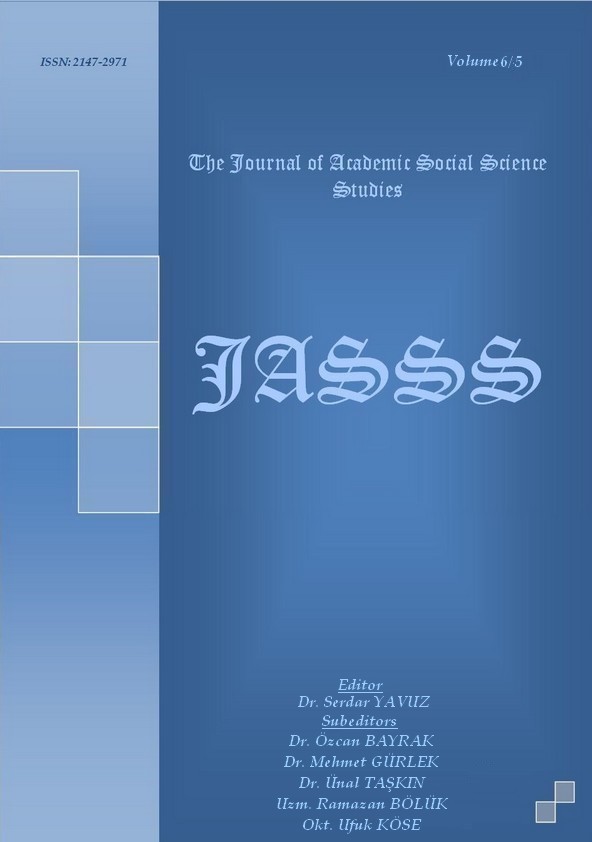Author :
Abstract
Bu çalışmada Grimm Kardeşler’ in Altı Kuğu adlı masalının çevirisi üzerine bir eşdeğerlik incelemesi yapılmıştır. İki farklı çevirmen tarafından Türkçeye aktarılan bu metin düzanlam, yananlam ve edimsel eşdeğerlik açısından karşılaştırmalı olarak incelenmiştir. Bu incelemede kaynak dil ve amaç dil arasında çeviri eşdeğerliğinin sağlanıp sağlanamadığı tartışılmış ve gerekli görülen yerlerde öneriler sunulmuştur. Çeviri eleştirisi kapsamında gerçekleştirilen bu çalışmada özellikle kültürel ögelerin aktarımında hatalar yapıldığı tespit edilmiştir. Bu hataların çeviri amacının belirlenmesinden ve çevirmenin yöneliminden kaynaklandığı söylenebilir. İncelediğimiz metinde çevirmenlerden birinin kaynak metnin biçimsel ve kültürel özelliklerine bağlı kalma isteği; diğerinin ise metni amaç dil okuyucusuna daha çok yakınlaştırma yönelimi gözlemlenmiştir. Yani birisi kaynak dil odaklı, diğeri amaç dil odaklı çeviri anlayışını yansıtmaktadır. Sözcük düzeyinde bire bir çeviri yapmaya çalışmanın, eşdeğerlik kurmaya yetmediği görülmüştür. Tamlamaların amaç dilde doğru yapılarla kurulmaması, çeviride anlatım bozukluklarına neden olmaktadır. Kaynak metnin dil unsurlarına bağlı kalmaya çalışmanın çeviride eşdeğerliğin kurulmasını olumsuz yönde etkilediği; buna karşın kaynak metinden fazla uzaklaşmanın iyi bir çeviri yapılmasına engel olduğu tespit edilmiştir. Her iki çevirmenin ağırlıklı olarak deyimlerde olmak üzere, düzanlamsal, yananlamsal ve edimsel eşdeğerlik açısından eleştirilebilecek yapıları tercih ettikleri ve bu durumun çeviri hatalarına neden olduğu görülmüştür. Sonuç olarak başarılı bir masal çevirisi için hem metin türü özelliklerinin hem de kaynak dil ve amaç dilin sosyal ve kültürel ögelerinin eşdeğer biçimde aktarılmasının önemi uygulamalı olarak bir kez daha ortaya çıkmıştır.
Keywords
Abstract
The aim of this study is to analyze the issue of equivalence in the translation of fairy tales in reference with Grimm Brothers’ the Six Swans, which was translated into Turkish by two different translators. In order to make a sound evaluation, the two different translations of the fairy tale, namely the Six Swans have been compared and contrasted in regard to denotative, connotative and pragmatic language equivalence. In this examination, it has also been discussed whether the translation equivalence between the source language and the target language is provided or not, and recommendations have been given where necessary. In this study made within the context of translation criticism, it has been determined that mistakes have been made especially in the transference of cultural elements. It can be said that these mistakes derive from the determination of the purpose of translation and translator’s tendency. In the text we examine, it has been observed that one of the translators adhered to a request for the formal and cultural features of the source text, the other tended to familiarize the text to the target language reader. So, one reflects the source-language-based-understanding, whereas the other reflects the target-language-based-understanding. It has been observed that trying to make a word-by-word translation on the level of word is not sufficient to establish equivalence. It has been understood once more that not to establish the noun phrases with the correct structures in target language causes ambiguities in translation. It has been found out that trying to adhere to the elements of source language negatively affects the establishment of equivalence, whereas getting further away from the source text hinders making a good translation. It has been observed that both translators prefer structures which can be criticized predominantly in idioms in terms of denotative, connotative and pragmatic language equivalence and this situation causes translation mistakes. As a result, for making a successful fairy tale translation, the importance of transferring both features of the type of text and features of source and target languages as well as their socio-cultural elements in an equivalent form has been shown once more.
